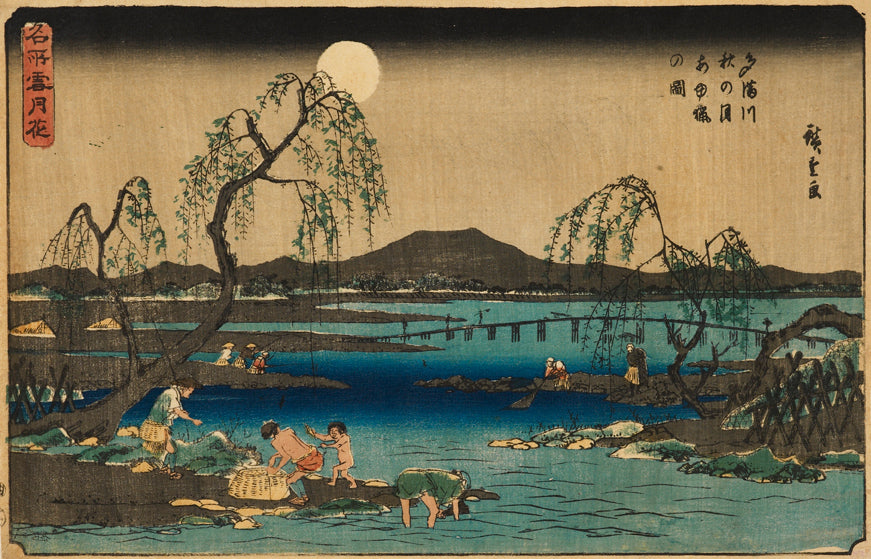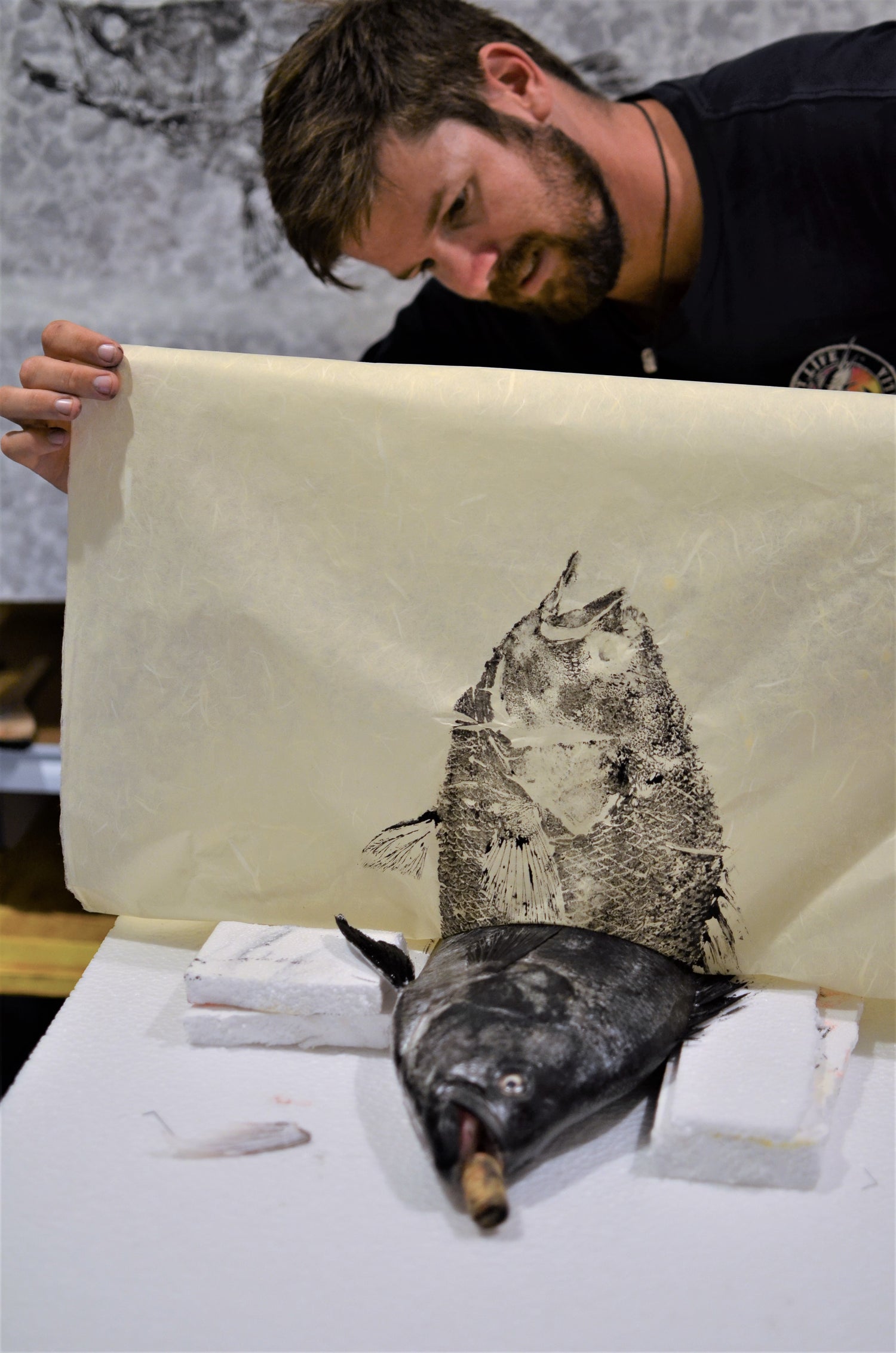About Gyotaku

History
Gyotaku is a Japanese art form that dates back to the mid 1800s, a long time before cameras and phones. Fishermen would use this technique as a method to record their outstanding captures to help tell their stories when they returned to shore. It is rumored even, that samurai would use Gyotaku prints to settle fishing competitions.
Image: Jo-Hung Tang

Method
The most traditional method of Gyotaku involves using Sumi ink and paper. Sumi ink is derived from soot and the papers used are known as washi, which is japanese paper made by hand using fibres from local plants.
Ink is applied directly onto the surface of the fish, covering one full side of the fish and all of its features. Once the fish is coated with ink the sheet of washi is pressed against the fish. Every part of the fish must be rubbed against the paper to transfer the ink to create the artwork. The washi is then removed to reveal an imprint of the fish showing its true size and features.
Today Gyotaku takes on many forms involving modern and traditional techniques. Many different types of inks, papers and fabrics are used to achieve different results.
